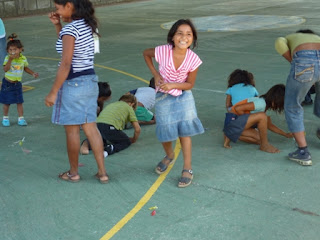Hi! Welcome to English Class!
If I wasn’t in love with medicine, I would want to be a teacher. This experience has allowed me to play teacher as I stepped into the role as “profe” (short for profesora) of an adult Beginner’s English class. Teaching English is truly one of the most valuable services Manna offers because we are native speakers. In a country where the job hunt is brutal, knowing English provides a real advantage over other prospects and provides opportunities for higher paying jobs. There are English classes in Nicaragua, but they are taught by native Spanish speakers… aka people learn “Can you say me your name?” Not quite.
Teaching English is very difficult. It's something I use everyday but never think about. Now I'm challenged to consciously think of how I can present the language to a non-native speaker. We somewhat follow a curriculum from a set of textbooks, but we mainly plan our own lessons, vocab lists, worksheets, etc.
Teaching English is very difficult. It's something I use everyday but never think about. Now I'm challenged to consciously think of how I can present the language to a non-native speaker. We somewhat follow a curriculum from a set of textbooks, but we mainly plan our own lessons, vocab lists, worksheets, etc.
Every Tuesday and Thursday, my friend Amanda and I teach an hour long class to 30ish students from our community, most between the ages of 15 and 25. I usually begin with the dialogue: “Hello! Welcome to English Class. How are you, student-I-choose-to-pick-on?” “I’m fine and you?” “I’m great! Thanks for asking.” Sometimes, I’ll switch it up and say, “I’m tired.” And I gesture until they understand the word tired and repeat it to me in Spanish. Or any other word I feel like acting out.
I try to use the least amount of Spanish as possible in my classes. This is difficult because many of them know very, very little English. So there is lots of acting, lots of funny faces, lots of making myself look like an idiot. But it works.
We’ve only taught 2 grammar tenses – simple present (ex: I eat, you eat, he/she/it eats, we eat, they eat) and present progressive (ex: I am eating, you are eating, he/she/it is eating, we are eating, they are eating). It’s hard to focus the majority of my speech to these two tenses. I’ve also gotten really good at saying one thought in like 3 sentences so they get the point. “Write your name on your paper.” “Everyone needs to have a name on his/her paper.” “I want to see a name on your paper.” I’ve noticed they’ll at least be able to pick out “name” and “paper” from each sentence to realize what I want them to do.































